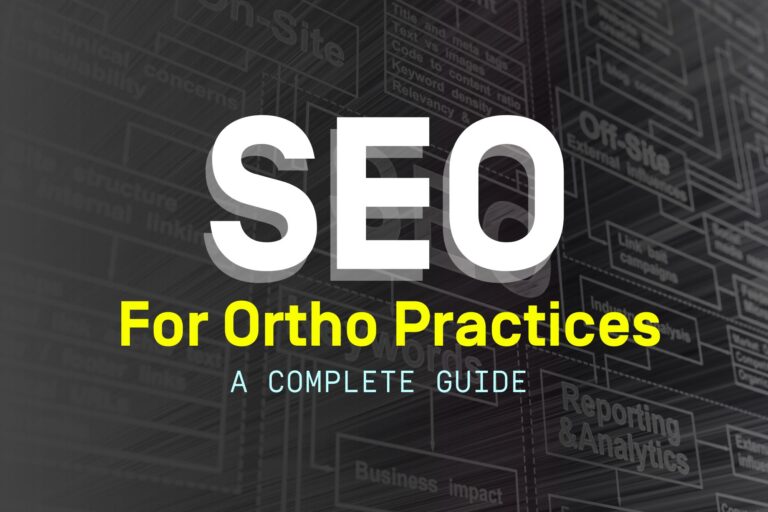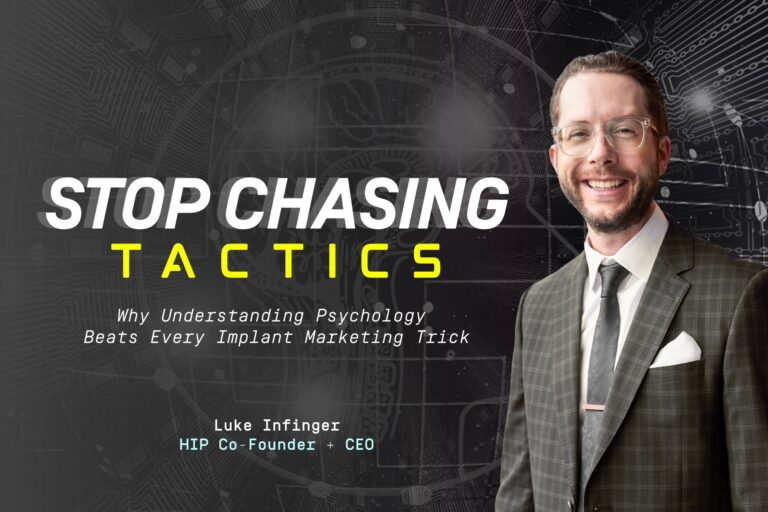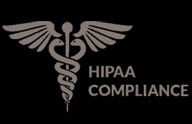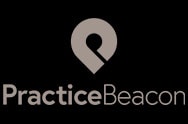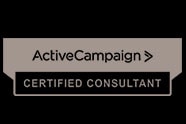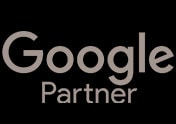Subscribe: RSS
Why a Single Ad Formula Falls Short
When two veteran growth agencies—HIP Creative and Neon Canvas—compare notes and still disagree about whether Facebook or Google deserves the first marketing dollar, it’s clear the universal-playbook myth needs to die. As Dr. Kyle Fagala observes, a Class II malocclusion isn’t treated exactly like a Class III—so why should every practice run the same advertising prescription?
Define Your Practice Persona
- Lifestyle clinic vs. Volume clinic: A boutique office with limited chairs can drown in too many leads, while a growth-mode practice needs that volume.
- Growth horizon: Are you satisfied maintaining, eager for steady expansion, or aiming for rapid scale?
- Team capacity: Advertising only helps if your staff can handle responses. HIP and Neon assemble several playbooks because each persona requires a distinct plan.
Get To Know The Three Core Channels
Meta Ads (Facebook & Instagram): The Rocket Booster
- Reaches people who were not yet searching, generating a surge of inquiries.
- One Beacon practice produced $3.8 million in production within 15 months from Meta alone.
- High volume demands tight follow-up.
Google Ads: The Intent Magnet
- Captures patients already typing “braces near me” into search.
- Budget rises with click prices and local demand, giving steady, predictable growth.
- Works well with Meta retargeting so your brand stays visible from discovery to decision.
Long-Term SEO: The Garden That Keeps Feeding You
- Builds authority and organic traffic over time.
- Slower to show results but lowest incremental cost once it matures, ideal for lifestyle practices.
Build A Blend That Evolves With You
- Begin conservatively: Pair SEO with a modest Google budget to pick up existing demand while you fine-tune operations.
- Add Meta for volume: When your team consistently meets response goals, introduce Meta to flood the funnel.
- Review each quarter: Shift spend between Meta and Google as staffing levels and market forces change.
Turn Clicks Into Starts
Speed to Lead
People decide whether to dismiss a notification in roughly eight seconds. Even highly interested prospects grow cold if you wait hours to reply.
- Aim for under five minutes on the first response.
- Plan eight to twelve touches (call, text, email) before closing a lead file.
Specialized Roles
Starts rise when Treatment Coordinators focus on nurturing prospects instead of juggling front-desk tasks. Hiring people with quick-start personalities for these seats boosts results.
Financial Lens
A typical ortho start is worth well over $4,500. Spending $50 to $200 to win that patient is simply sound math.
The Promo Question
Offering a discount does not always cheapen your brand; joining an insurance PPO is effectively a preset discount. The key is honesty, so avoid raising fees just to slash them dramatically later.
Practical Steps
- Persona review: Clarify volume targets, case fee, chair availability, and team capacity.
- Budget split: Start with roughly seventy-thirty toward the channel that best matches your persona, and revisit every ninety days.
- Secret-shop your funnel: Submit a test inquiry and measure response speed and follow-up cadence.
- Check lifetime value math: Confirm your cost per start still leaves your desired margin.
- Select the right playbook: Use the plan that suits your profile rather than copying someone else’s.
Let Data Guide The Throttle
Marketing works when you match channels to your practice’s profile and reply to inquiries without delay. Begin by outlining goals and staff capacity, activate one channel, and monitor actual results. Shift budget only when the data supports the move, not because others say it is the latest trend. When patient demand, team readiness, and performance metrics align, growth turns into a steady climb rather than a stressful gamble.

